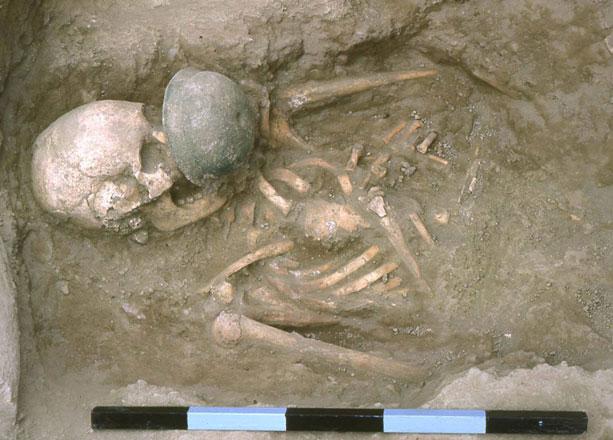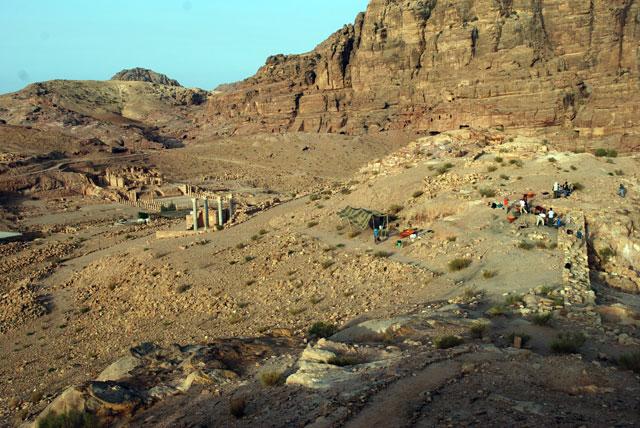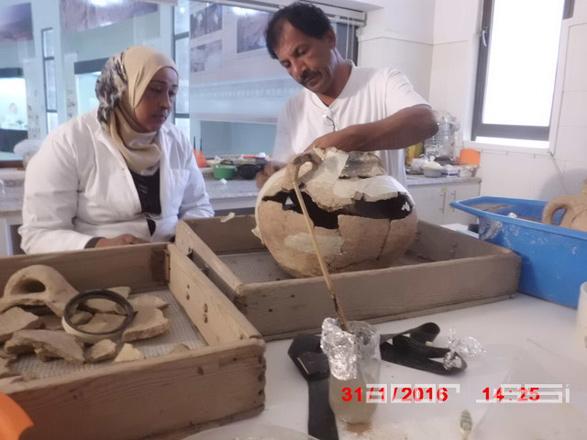You are here
Scholar explores living relation to dead in early Jordan Valley
By Saeb Rawashdeh - Apr 21,2018 - Last updated at Apr 21,2018

Iron IIC/Persian-period burial from Tell Al Sa'idiyeh, Jordan (Photo courtesy of Jonathan N. Tubb)
AMMAN — The associate director of the American Centre of Oriental Research (ACOR), Jack Green, on Wednesday delivered a lecture on the rich and various burial customs of the Jordan Valley, from dolmens and cave tombs to inhumation cemeteries, under the title “Continuity and change in mortuary customs: the Jordan Valley in the second and first millennia BC”.
Noting the importance to first situate the archaeology of death and burial in anthropological and ritual terms, Green said: "It’s very important to remember that regardless of who we are, where we come from and what we believe, everyone dies; and there are practical as well as social and cultural factors that play a role in how the living deal with the dead. From treatment of the physical body, preparation of the burial place, to the funerary rituals and customs that help the living to gather and honour the dead, a number of activities exist to allow us to remember and to some extent forget the dead.”
"Death is a very disruptive event: everyday life stops and families and communities have to prepare for the funeral and begin to grieve," the scholar continued, noting that dealing with death is closely tied to memory and “a sense of place, identity”. Death also provides opportunities to reflect on religious or cosmological belief, generating strong feelings and emotions, he added.
Regarding burial sites in the Jordan Valley, he said the region has been important for human settlement and interaction throughout human history.
Bab edDhra (on the south bank of Wadi Karak) is a very important site from the Early Bronze Age, excavated by Paul Lapp in 1960s. Recent research by Meredith Chesson yielded excellent preservation of mortuary remains especially of secondary burials, Green outlined.
“Secondary burials mean the movement of already decayed human remains to a new location either within the same tomb or in another location,” the director explained, adding that what is most interesting about Bab edh Dhra is “the very careful selection of parts of the human body, especially long bones and skulls, and the neat arrangement of these remains”.
Another structure of shaft tombs physically cut into the rock is the charnel house, which contained evidence of human remains, according to the archaeologist who said “they all appear to have been placed carefully on shelves within the building itself, and so it is quite plausible to follow the description of these as ‘body libraries’ for housing the disarticulated remains of the dead”.
Another significant site is Tell Al Sa’idiyeh, which contains 45 graves that belong to the Iron IIC/Persian and Early Hellenistic period.
“Single primary burial was the predominant burial mode at the site, which is echoed at many other sites in the Levant," he explained, noting that such cases only involved single adults with one or two infants or children.
A few children of above infant age were interred in their own graves, which indicates the reuse of graves for infant burials over relatively short periods of time and may explain the apparent lack of infant burials, Green maintained.
“At Tell Al Sa’idiyeh, we may see the deliberate planning of the cemetery and careful management of burial plots, taking into consideration the boundaries between individual burials and a limited amount of reopening of burials for reuse,” he underscored.
Consequently, the trend towards the individual pit grave cemeteries in the Late Bronze Age has been theorised as related to the impact of the Egyptian empire on the local population, Green said.
“Yet, ultimately, what we see throughout these waves of changes and continuity are changes in the ways in which the living interact with the dead — from phases of more intense contact, in which the living and the dead have a close physical connection and relationship that helps reinforce a communal identity, to the expression of individuality in death on social and political identity,” the scholar concluded.
Related Articles
AMMAN — Petra’s monumental tombs represent a familiar sight for researchers working in the area, however, less familiar are the chambers cut
AMMAN — British-American archaeologist Jack Green became interested in the archaeology of the Middle East and the Levant as he came across a
AMMAN — Since 1924 Ghor Safi, located on the southern tip of the Dead Sea, has been attracting scholars and research teams from all over the















